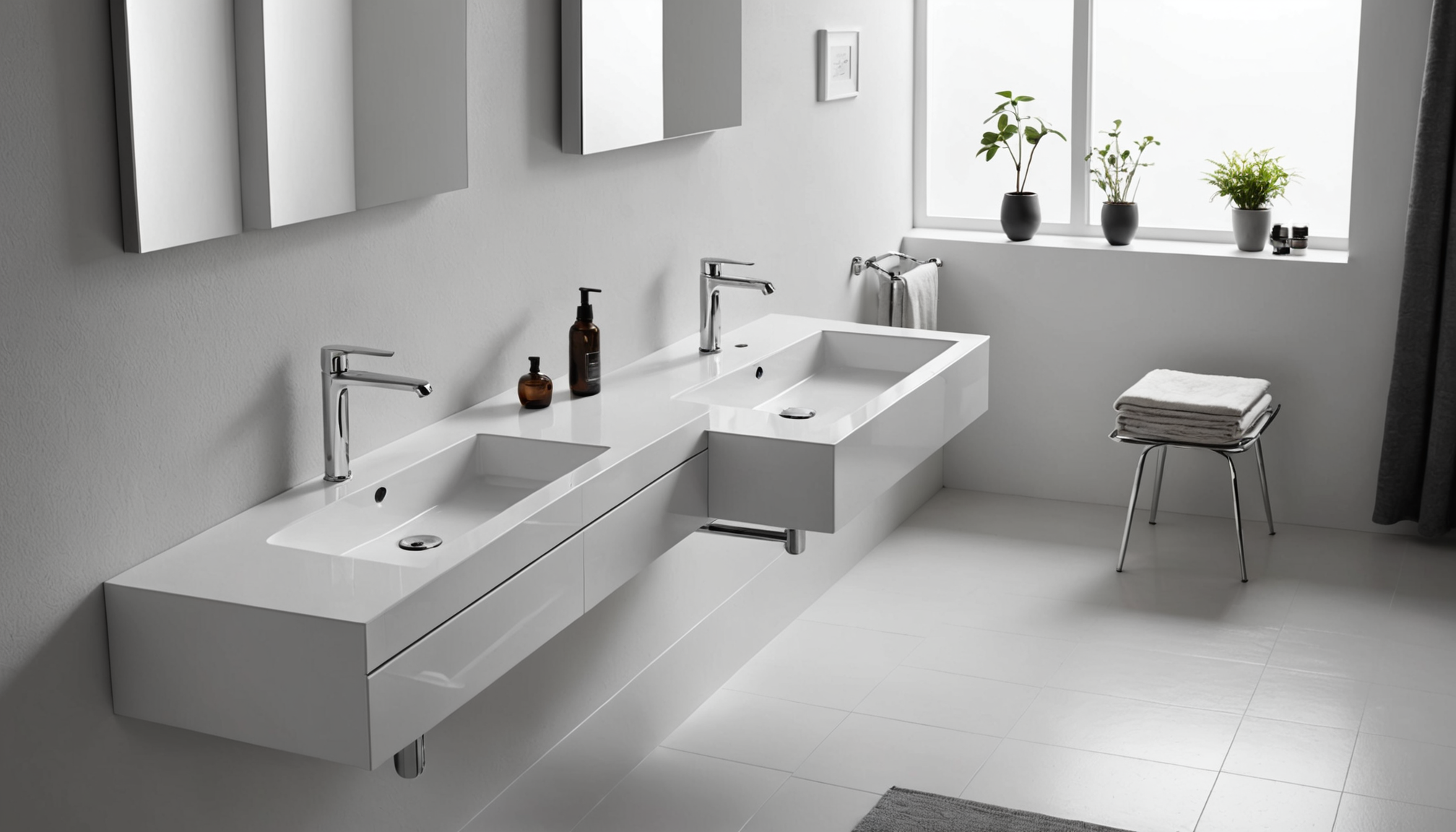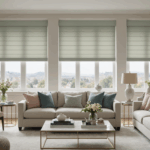When embarking on the journey to renovate your bathroom, one of the critical aspects to consider is how to maximize space and functionality effectively. Bathrooms are often one of the smallest rooms in the home, yet they require smart design and efficient use of space to ensure that every square inch serves a purpose. Whether you’re tackling the project as a DIY enthusiast or hiring pros, focusing on space and functionality can significantly impact your bathroom’s overall appearance and usability.
A well-planned layout is a cornerstone of maximizing space. Begin by evaluating the current layout of your bathroom. Take note of how you move within the space, where your eyes rest, and any current limitations. After observing, consider options for rearranging the essential elements like the toilet, sink, and shower to create a more open, less cluttered environment. Sometimes, even small adjustments in the arrangement can lead to significant improvements in flow and function.
One of the strategies to consider is utilizing vertical space. Installing tall, narrow cabinets or shelving can provide ample storage without compromising floor space. Corner shelves or recessed shelving units can also offer additional storage, making use of previously wasted areas. Additionally, opting for wall-mounted sinks and toilets not only visually opens up the space, it also simplifies cleaning and enhances accessibility.
Incorporating multi-functional furniture can further enhance the bathroom’s utility. For instance, vanities with ample storage options allow you to stow away toiletries and cleaning supplies efficiently. Choosing a vanity with drawers rather than doors makes retrieving items easier and maximizes lower cabinet space for better organization.
Let’s compare some space-saving options in terms of cost, installation complexity, and effectiveness using the following table:
| Option | Cost | Installation Complexity | Effectiveness in Space Saving |
| Wall-mounted Sinks | Moderate | Professional installation recommended | Excellent |
| Recessed Shelving | Low to Moderate | Varies (DIY doable) | High |
| Tall Cabinets | Moderate | DIY friendly | Very Good |
| Corner Shelves | Low | DIY | Good |
Another key component of functionality is selecting fixtures that align with your lifestyle preferences. A double vanity will suit a home with multiple users sharing the space, while a single sink might be more appropriate for compact bathrooms or if storage is prioritized over counter space. Opt for customizable storage solutions like organizers or dividers within drawers and cabinets to provide tailored storage that fits your specific items.
Ultimately, maximizing space and functionality in your bathroom requires thoughtful planning, strategic choices, and sometimes a bit of creativity. Prioritize flexibility and versatility in all your decisions to create a bathroom that not only meets your current needs but can also adapt as those needs evolve. By focusing on these principles, your bathroom renovation can yield a space that feels significantly larger, more efficient, and far more enjoyable to use.
Choosing the right materials
When renovating your bathroom, choosing the right materials is crucial to ensuring both the longevity and aesthetic appeal of the space. The material selection has a significant impact on the bathroom’s overall design, durability, and maintenance needs, making it essential to weigh options carefully.
1. Evaluate Material Durability and Suitability:
– Tiles: Opt for ceramic or porcelain tiles for floors and walls in high-moisture areas. They are water-resistant, come in various colors and patterns, and are easy to clean.
– Countertops: Consider natural stones like granite or engineered materials like quartz for vanities. Granite offers unique patterns and exceptional durability, whereas quartz provides a more uniform look and is non-porous.
– Cabinets: Choose solid wood or moisture-resistant MDF (Medium-Density Fiberboard) for cabinetry. These materials withstand humid conditions better and offer longevity.
2. Prioritize Safety and Comfort:
– Flooring: Choose non-slip surfaces, especially in wet zones. Textured tiles or vinyl flooring with a slight texture can provide traction and minimize slip risks.
– Underfloor Heating: To enhance comfort, consider installing underfloor heating under tiles. This feature keeps the tiles warm and accelerates drying, reducing mildew risks.
3. Consider Maintenance and Cleaning:
– Select grout colors that will not show dirt easily, or use grout sealant to prevent stains and mold growth.
– For ease of maintenance, go for glass shower doors treated with a protective coating or install shower curtains from water-repelling materials.
4. Factor In Aesthetics and Style:
– Use natural materials like stone or wood accents to add warmth and texture to the bathroom, aligning with current interior design trends.
– Incorporate color schemes that reflect your personal style, such as earth tones for a serene spa-like atmosphere or bold colors for a modern, vibrant look.
5. Mind the Budget:
– Establish a budget before selecting materials. It’s important to balance cost with durability and style. Consider where to splurge and where to save; for example, investing in high-quality tiles while opting for more cost-effective cabinetry materials.
– Look for material sales or consider remnant options for small areas like countertops to stay within budget without sacrificing quality.
6. Embrace Sustainable Choices:
– Consider eco-friendly materials, such as bamboo or recycled glass tiles, to make your renovation more sustainable. These materials not only have minimal environmental impact but also bring unique textures and colors into your bathroom.
7. Consult with Professionals:
– If unsure about material selections, consult with hiring pros who can provide guidance based on their experience with various materials.
– An expert can help tailor your choices to align with your lifestyle, ensuring the final design is practical and enduring.
By thoughtfully selecting the right materials, you ensure that your bathroom renovation results in a functional, attractive, and long-lasting space that complements your home while meeting your needs.
Updating fixtures and hardware
When you’re planning to renovate your bathroom, updating fixtures and hardware can make a significant difference in both style and functionality. This process is not only about aesthetics; it impacts the efficiency and sustainability of your bathroom. By selecting the right fixtures and hardware, you’ll experience improved water conservation, enhanced usability, and a refreshed appearance.
Start by considering the water efficiency of your new fixtures. Modern technology offers a range of eco-friendly options like low-flow toilets and showerheads, which substantially reduce water usage. These fixtures are designed to minimize water consumption without compromising performance, ensuring that your bathroom functions efficiently while being environmentally responsible. This change not only benefits the planet but also reduces utility bills, offering long-term financial savings.
Next, focus on the style and quality of the fixtures. From sleek, minimalist designs to classic, ornate styles, there’s a wide array of options to suit any taste. When choosing faucets, finishes like brushed nickel or oil-rubbed bronze offer both durability and elegance. Opt for high-quality materials that resist corrosion and tarnish, guaranteeing a long-lasting shine and smooth operation. Additionally, consider the overall theme and color palette of your bathroom to ensure that all the elements harmonize with each other, creating a cohesive look.
Functionality is another key consideration when updating fixtures and hardware. Choose levers and knobs that are not only visually appealing but also user-friendly. For families or households with elderly members, opt for fixtures with easy-to-turn handles that ensure everyone can use them with ease. Innovative options such as touchless faucets and smart showers can elevate the user experience, making daily routines more convenient and hygienic.
When it comes to faucets and showerheads, invest in multifunctional features. Many modern showerheads come with adjustable spray settings, allowing users to customize their shower experience according to personal preferences. Similarly, kitchen-style pull-out faucets in the bathroom can increase flexibility, aiding in tasks like rinsing hair or cleaning the sink area.
Don’t overlook the benefits of upgrading ancillary hardware like towel bars, hooks, and cabinet handles. These small touches can complement the new fixtures and infuse a fresh look into your bathroom. Selecting uniform materials and finishes for all hardware elements unifies the design, creating a consistent and polished aesthetic.
Whether you’re undertaking a DIY project or hiring pros for the renovation, it’s vital to approach the update of fixtures and hardware with a thoughtful plan. Hiring professionals can be particularly advantageous if you’re looking to implement advanced features or need guidance on integrating sustainable practices effectively.
In summary, updating your bathroom fixtures and hardware offers a multitude of benefits, including enhanced performance, improved sustainability, and an updated appearance. By choosing the right components, you ensure that the bathroom not only meets contemporary standards but also caters to your unique needs and preferences, completing your renovation with style and practicality.
Enhancing lighting and ventilation
Transforming your bathroom into a sanctuary of light and airiness can make a world of difference in how the space feels and functions. Enhancing lighting and ventilation is not merely about aesthetics; it plays a critical role in the overall comfort, health, and efficiency of the room. With careful planning and the right choices, you can create an invigorating atmosphere that complements your bathroom renovation.
When it comes to lighting, consider a layered approach. This means incorporating different types of lighting to serve various functions. For example, ambient lighting provides overall illumination, task lighting focuses on specific tasks like shaving or applying makeup, and accent lighting highlights architectural features or design details. Implementing dimmable switches allows you to adjust the brightness to suit different moods and occasions, adding versatility to your bathroom lighting scheme.
Start with natural lighting, as it brings a fresh and energizing quality to the space. If privacy concerns or existing structures limit window size, consider options like frosted glass, skylights, or solar tubes to introduce natural light without compromising privacy. These elements can brighten the room and reduce the need for artificial lighting during the day.
For artificial lighting, LED fixtures are a popular choice due to their energy efficiency and long lifespan. They are available in a wide range of styles and color temperatures, allowing you to create a warm and inviting ambiance while keeping energy consumption low. Illuminate vanity areas with adjustable sconces or backlit mirrors to ensure an even, shadow-free light that’s ideal for grooming tasks.
Ventilation is equally important in a bathroom renovation, as it helps control moisture levels, preventing mold and mildew. A properly ventilated bathroom not only improves air quality but also protects the structural integrity of the room from moisture damage. An exhaust fan is a must-have fixture in any bathroom. Look for models with quiet operation that provide excellent airflow to ensure efficient moisture extraction.
Smart exhaust fans with humidity sensors can automatically activate when moisture levels rise, offering an efficient and hassle-free solution for humidity control. Choose a fan that is appropriately sized for your bathroom to ensure optimal performance. If you’re planning to combine the fan with a lighting fixture, ensure the light output meets the functional needs of the space.
While you can undertake some lighting and ventilation upgrades as a DIY project, hiring pros may be beneficial, especially if your renovation plans involve electrical rewiring or complex installations. Professionals can ensure compliance with building codes and recommend solutions that maximize efficiency and effectiveness.
Incorporating these improvements into your bathroom renovation can significantly enhance the room’s livability and aesthetic appeal. A well-lit and properly ventilated bathroom not only contributes to a better daily experience but also adds value and comfort to your home for years to come.
Incorporating modern design trends
Modern bathroom design trends offer a wealth of opportunities to transform a simple, utilitarian space into a stylish sanctuary. As you embark on your bathroom renovation, staying updated with these trends can help ensure your space remains contemporary and appealing for years to come.
One of the most notable trends is the shift towards earthy, natural tones. Soft greys, greens, and warm terracotta hues have become popular choices for creating a soothing, spa-like atmosphere. Accentuate these palettes with natural materials like wood and stone, which add texture and warmth to the space. Incorporate wooden vanities or stone accent walls to seamlessly blend these elements into the room.
Another trend is the integration of smart technology. High-tech toilets, smart showers, and mirrors with built-in lighting and Bluetooth capabilities enhance both convenience and luxury. These features are not only about making daily routines more comfortable but also about improving the overall functionality of the bathroom. Smart showers, for example, allow precise control over temperature and water flow through digital interfaces or even voice commands.
Minimalism continues to dominate bathroom design, emphasizing clean lines, uncluttered spaces, and a soothing sense of order. Floating vanities, simple geometric fixtures, and frameless glass shower enclosures support this trend, providing a sleek and seamless look. By minimizing visual clutter, you create a bathroom that feels more spacious and easy to maintain.
For those looking for a more personalized touch, bespoke elements like custom tile work, unique lighting fixtures, and personalized storage solutions resonate with the trend of individual expression within interiors. These custom features ensure that your renovated bathroom is tailored to your personal taste and lifestyle needs, rather than just copying a one-size-fits-all design.
Finally, sustainability remains a significant consideration in contemporary bathroom design. There’s an increasing demand for eco-friendly materials and water-saving fixtures, such as low-flow showerheads and dual-flush toilets, making it easier to conserve resources and reduce utility bills. Additionally, using recycled or sustainable materials not only reduces your environmental footprint but also adds unique character to your renovation.
By thoughtfully embracing these modern design trends, you can create a bathroom that blends functionality with striking aesthetic appeal. Whether you’re undertaking the renovation as a DIY project or hiring pros, incorporating these trends ensures a stylish, efficient, and reflective of your personality bathroom environment.
*
In conclusion, renovating your bathroom is a chance to redefine one of the most essential spaces in your home. By focusing on maximizing space and functionality, choosing materials wisely, updating fixtures, enhancing lighting and ventilation, and embracing modern design trends, you can craft a bathroom that balances style, comfort, and practicality. Whether through innovative DIY solutions or the expertise of hired professionals, your new bathroom can offer an inviting ambiance that enhances your daily routine and adds value to your home.


